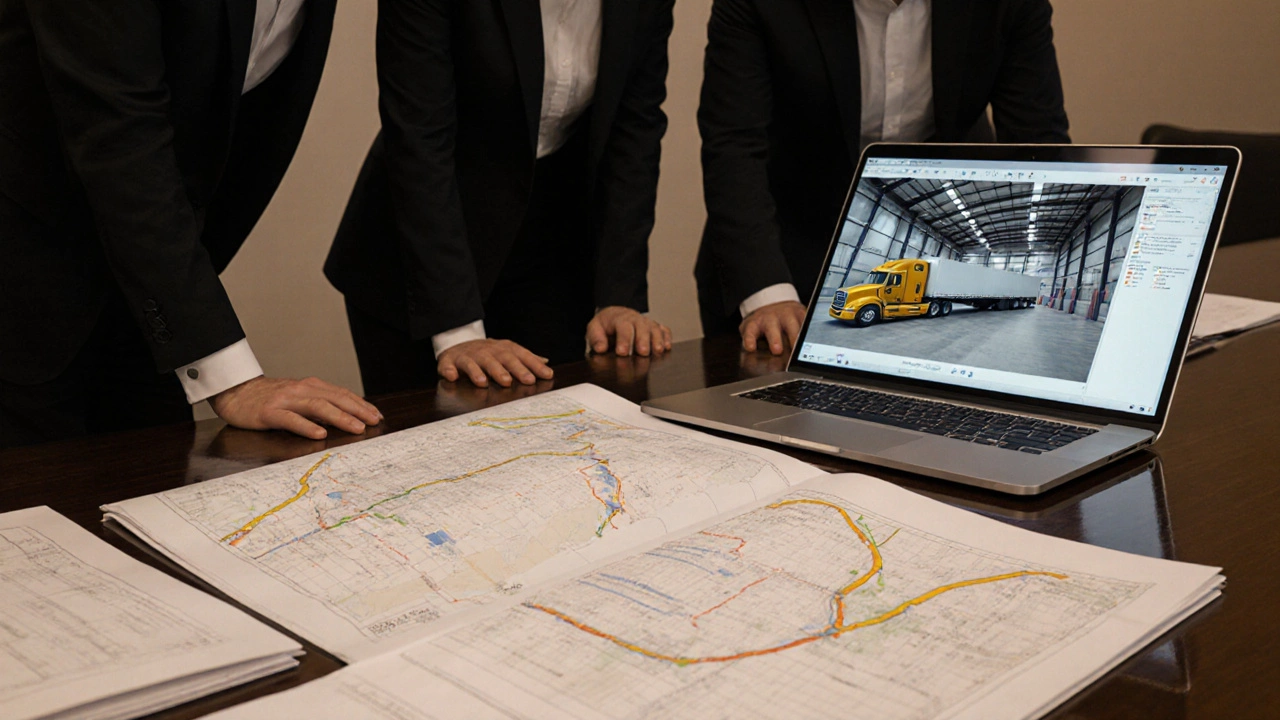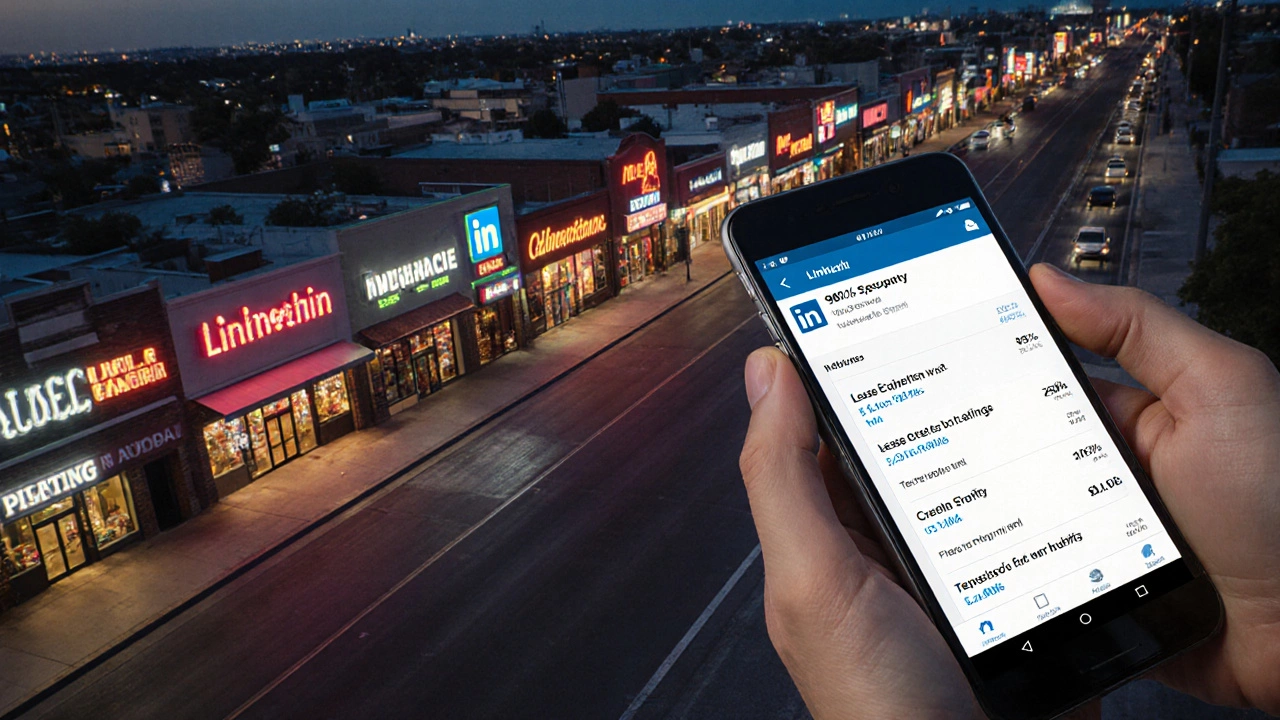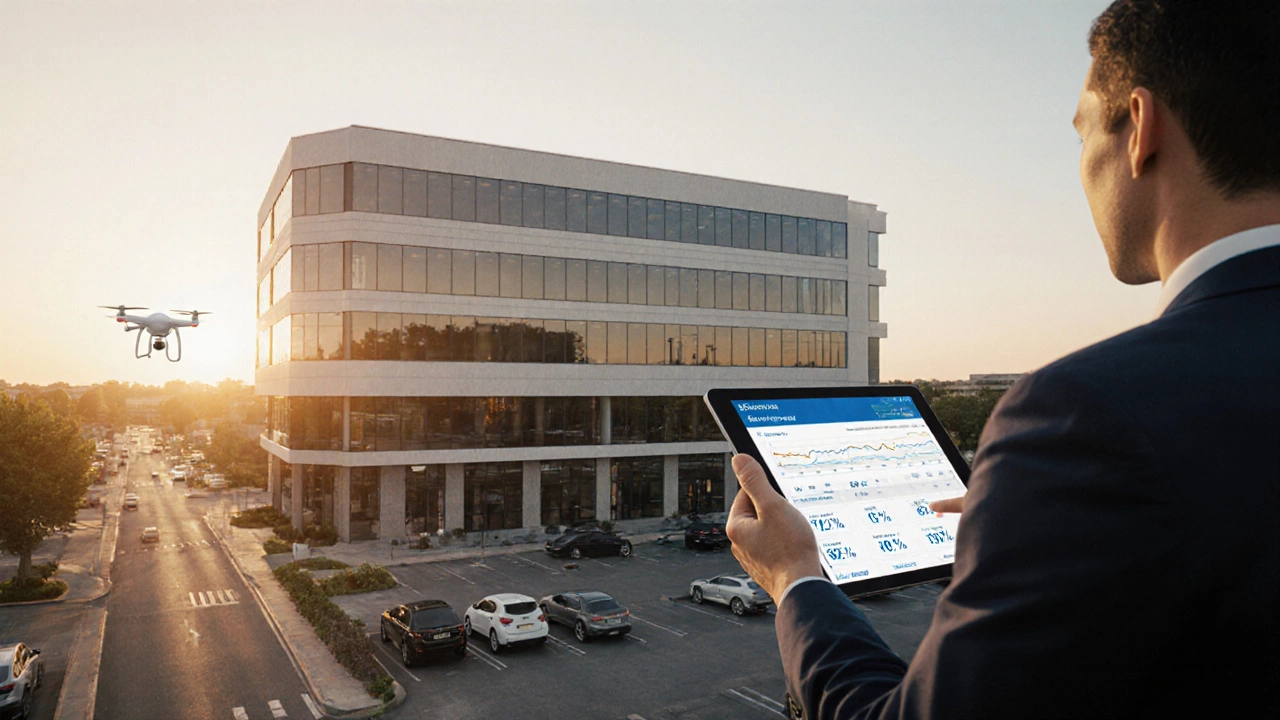Commercial Real Estate Cap Rate Calculator
Cap Rate Calculator
Calculate your commercial property's cap rate to determine investment value. The cap rate is a key metric showing the expected return on investment for commercial properties.
Results
Cap rate is a key metric used by commercial real estate investors to evaluate potential returns. A higher cap rate indicates higher potential return but typically higher risk.
Marketing commercial real estate isn’t like selling a house. You’re not chasing families looking for a backyard or a good school district. You’re selling space that needs to make money-whether it’s an office building, warehouse, retail strip, or medical center. Buyers aren’t emotional; they’re calculating. They want cash flow, location, tenant quality, and clear ROI. If your marketing feels like a residential listing, you’re already behind.
Know Your Property Inside Out
Before you write a single ad, you need hard data. Commercial buyers don’t care about ‘cozy’ or ‘bright.’ They care about net operating income (NOI), cap rates, lease expirations, and tenant credit ratings. If you can’t tell them the average rent per square foot over the last three years, or how many tenants renewed last year, you won’t get past the first meeting.
Start with a property profile that includes:
- Current occupancy rate and average lease term
- Monthly gross income and operating expenses
- Capital improvements made in the last 5 years
- Any pending leases or renewal options
- Zoning classification and permitted uses
- Access to public transport, freight routes, or major highways
This isn’t fluff-it’s the foundation. A 10,000 sq ft retail center in Melbourne with 95% occupancy and long-term leases to national chains will sell faster and for more than one with five short-term tenants and high turnover. The numbers tell the story. Your job is to present them clearly.
Target the Right Buyers
Not everyone can-or should-buy commercial property. You need to find the right kind of buyer: institutional investors, private equity groups, REITs, family offices, or local business owners looking to own their space. Each type has different needs.
For example:
- Institutional investors want large assets ($5M+), stable cash flow, and professional management. They’ll ask for audited financials and environmental reports.
- Family offices might buy smaller assets ($1M-$5M) and care more about long-term appreciation and tax benefits.
- Owner-occupiers (like a pharmacy or dental clinic) want to buy the building they’re already renting. They’re easier to close with because they’re emotionally invested in staying put.
Don’t blast the same listing to every email list. Use LinkedIn to find asset managers at investment firms. Join local commercial real estate networking groups. Attend industry events like the Australian Property Investors Network conferences. Build relationships before you list.
Use Professional Marketing Materials
A blurry photo of a parking lot and a 300-word description won’t cut it. Commercial buyers expect professional-grade marketing materials.
Invest in:
- Drone photography-show the building’s footprint, access points, and surrounding infrastructure.
- Virtual tours-360-degree walkthroughs of common areas, loading docks, lobbies, and tenant spaces.
- A dedicated property website-not just a page on your agency site. Use a simple domain like 123MarketStreet.com.au with clear sections: financials, floor plans, tenant list, maps, and contact info.
- A confidential information memorandum (CIM)-a 10-20 page document with financials, market analysis, and property history. This is what serious buyers ask for first.
One agent in Brisbane sold a $3.2M industrial warehouse in 11 days because their CIM included a 5-year cash flow projection, a map of nearby freight corridors, and photos of the loading dock with a 40-foot truck parked inside. That’s specificity. That’s credibility.

List on the Right Platforms
Residential platforms like realestate.com.au won’t get you commercial buyers. You need specialized channels.
Here’s where to list:
- Commercial Real Estate Australia (CREA)-the most trusted platform for Australian commercial listings.
- Colliers, CBRE, JLL, Knight Frank-even if you’re not using them as agents, their public listings get seen by institutional buyers.
- LoopNet-popular with U.S. and international investors looking at Australian assets.
- LinkedIn-post your listing with a short caption and link to the CIM. Tag local investment groups and property funds.
- Industry newsletters-like Property Observer or Real Estate Business-they have readers who are actively buying.
Don’t just post and forget. Update listings weekly. Add new tenants, lease renewals, or improvements. Buyers check these sites daily. Outdated info kills credibility.
Work With the Right Agent
If you’re not an experienced investor or developer, you need an agent who specializes in commercial. Residential agents often don’t understand NOI, lease structures, or tenant credit underwriting.
Ask potential agents:
- How many commercial deals have you closed in the last 12 months?
- Can you show me your last three listings and their final sale prices?
- Do you have a network of institutional buyers or private equity contacts?
- Will you handle the CIM and financial analysis, or will I need to pay for that separately?
Top commercial agents in Sydney charge 3-5% commission, but they often get 15-30% more for the property than generalists. That’s worth the extra cost.
Price It Right-Not Too High, Not Too Low
Pricing commercial property is a science, not a guess. You can’t just say, ‘My neighbor sold theirs for $4M, so this one’s $4.5M.’
Use comparable sales (comps) from the last 6-12 months in the same submarket. Look at:
- Price per square foot
- Cap rate (Net Operating Income / Purchase Price)
- Lease length and tenant quality
For example: If three similar retail centers in the same suburb sold at 6.5% cap rates, and yours generates $310,000 in NOI, your price should be around $4.77M ($310,000 ÷ 0.065). Going higher than that without a major upgrade or tenant upgrade will sit on the market for months.
Underpricing can trigger a bidding war-but overpricing kills momentum. Most deals stall because of bad pricing, not bad marketing.

Be Ready to Negotiate Like a Pro
Buyers will ask for tenant concessions, repairs, or price reductions. Don’t panic. Have your financials ready.
If they want you to fix the roof, ask: ‘What’s the estimated cost? Can we adjust the purchase price by that amount instead?’ That keeps you from spending cash and still meets their need.
If they want a 6-month rent abatement, calculate the loss in NOI. Then say: ‘That reduces your yield by 0.8%. If we keep the rent as-is, I’ll cover the legal fees for transferring the lease.’
Commercial deals are won by people who understand the numbers-and stay calm under pressure.
Build Trust Through Transparency
Commercial buyers are wary. They’ve been burned by hidden liabilities, zoning issues, or fake financials. Your job is to be the opposite of shady.
Disclose everything upfront:
- Any pending legal disputes
- Environmental assessments (even if clean)
- Building code compliance status
- History of vacancies or tenant disputes
Transparency doesn’t hurt your sale-it accelerates it. One seller in Perth included a full environmental audit with their listing. The buyer, a Sydney-based fund, closed in 17 days because they didn’t need to do their own due diligence.
People buy from those they trust. In commercial real estate, trust is built with documents, not charm.
Follow Up Like a Pro
Most sellers send out a listing and wait. That’s how deals die.
After a viewing or inquiry:
- Send a thank-you email within 2 hours.
- Include a link to the CIM and a one-page summary of key stats.
- Follow up in 3 days: ‘Did you have any questions about the tenant mix?’
- If they go quiet, check in every 2 weeks with a new update: ‘Tenant X just renewed for 5 years’ or ‘New bus route opens next month.’
Commercial buyers are busy. They’re looking at 20 properties at once. You have to stay top of mind-not by spamming, but by adding value.

